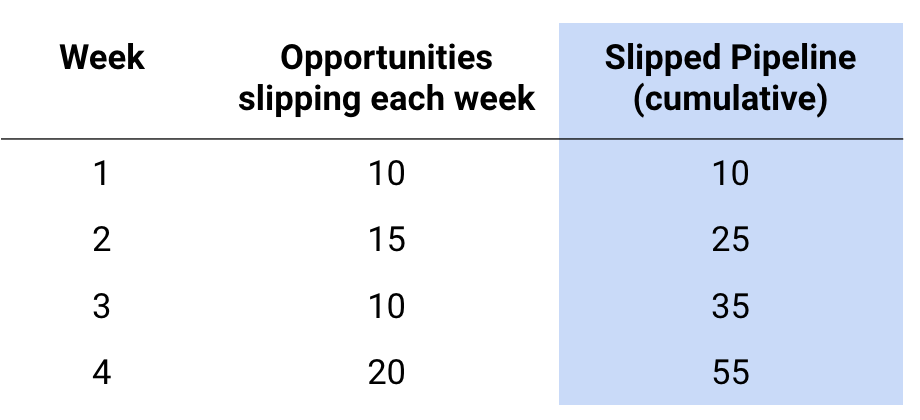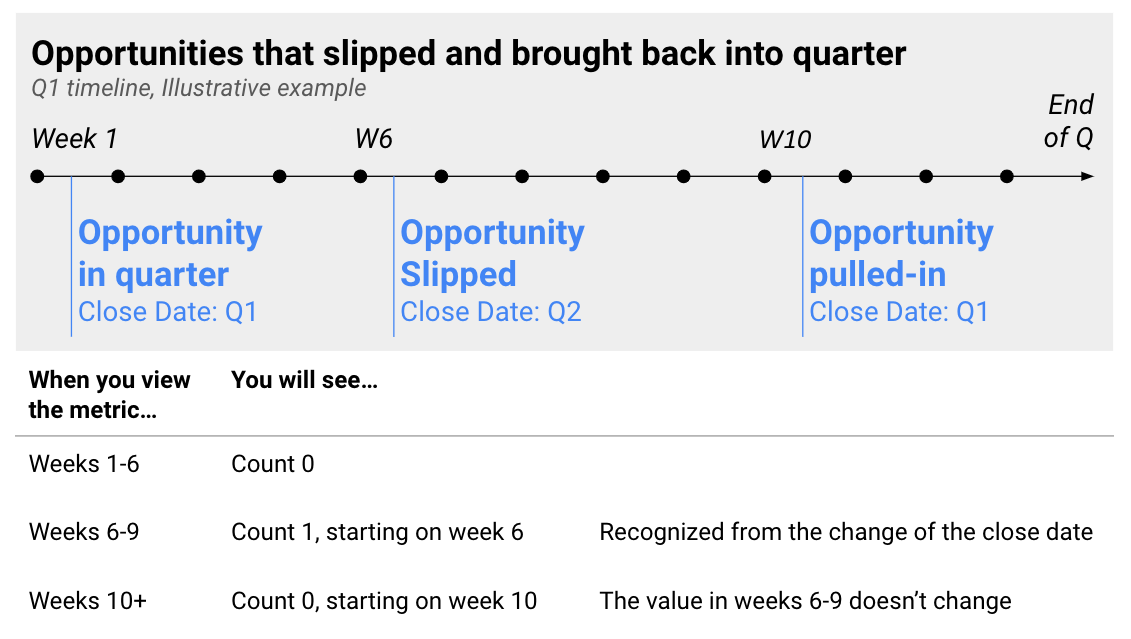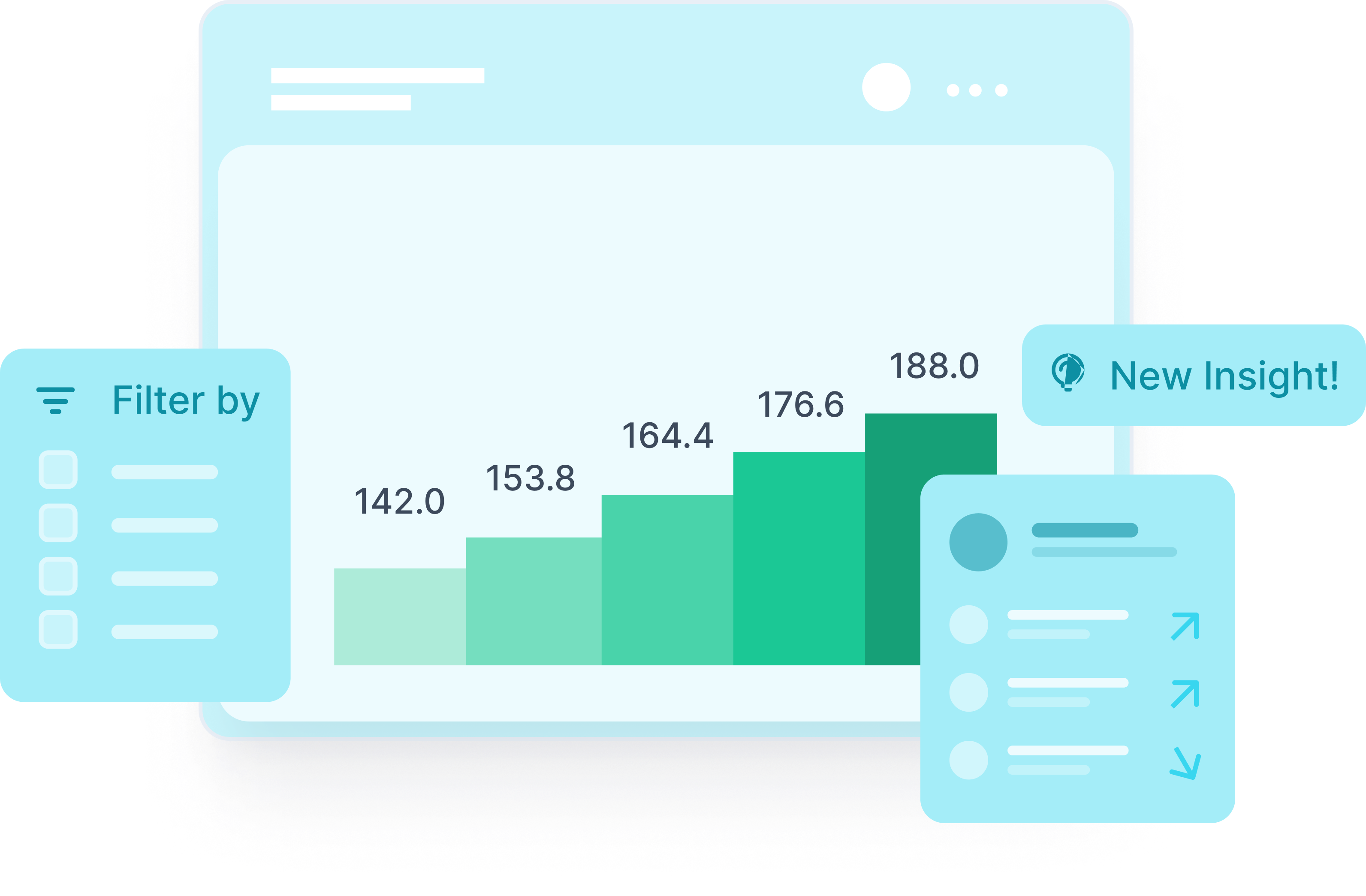What Is a Slipped Pipeline: Importance of Measurement and Improvement
A slipped pipeline refers to sales opportunities expected to close within a specific quarter but delayed to a future quarter. Monitoring this metric is crucial for sales teams aiming to maintain accurate revenue forecasts and improve overall sales performance. In this article, we’ll explore what a slipped pipeline is, why it matters, how to measure it, and the best strategies to manage it effectively.
Understanding Slipped Pipeline
Definition and Explanation
A slipped pipeline represents potential sales opportunities delayed beyond the expected closing date. These delays typically occur when deals are rescheduled, causing revenue forecasts to shift.
Common Reasons for Pipeline Slippage:
- Customer Delays: Customers may need more time for internal approval.
- Resource Constraints: Limited resources can slow down the sales process.
- Negotiation Challenges: Prolonged negotiations can cause unexpected delays.
- Market Factors: Economic downturns or competitive pressures can impact timelines.
Historical Context
The concept of pipeline management has evolved alongside the development of CRM systems and sales automation tools. Traditionally tracked manually, modern software now enables real-time monitoring, reducing the risk of missed revenue targets.
Industry-Specific Variations:
In industries like enterprise software or construction, where long sales cycles are common, slipped pipelines are particularly critical due to their direct impact on quarterly earnings reports.
Why is a slipped pipeline important to measure?

The slipped pipeline metric is important to measure because it:
1. Enables accurate revenue forecasting by tracking delayed opportunities and informing resource allocation.
2. Facilitates analysis of the sales process, identifying bottlenecks and areas for improvement.
3. Allows performance comparison across quarters for setting targets and resource adjustments.
4. Helps prioritize and manage opportunities that faced delays, increasing the chances of successful closure.
5. Empowers data-driven decision making and strategy adjustments to mitigate future delays and optimize sales operations.
Cumulative metric
Slipped pipeline is a metric used to calculate the cumulative value of all opportunities that were originally expected to close within a given quarter but have been delayed beyond that timeframe. It tracks the total value of these slipped opportunities, which represents the potential revenue that was not realized as planned.

By summing the values of all slipped opportunities, organizations can assess the impact of these delays on their quarterly performance and overall sales targets. This metric provides insights into the extent of revenue that was initially anticipated but did not materialize due to delays in closing deals. It helps businesses identify areas for improvement in their sales processes and allows them to make more accurate revenue projections for future quarters.
Monitoring the slipped pipeline over multiple quarters provides historical data for comparison, enabling organizations to identify trends and patterns in their sales performance. This information can be valuable for sales teams, management, and stakeholders in assessing the effectiveness of their sales strategies and forecasting future revenue more accurately.
Opportunities that slipped and then brought back to the quarter
When an opportunity slips, it means that its expected close date is pushed beyond the current quarter. However, there are instances when these slipped opportunities are later brought back into the same quarter. This can happen due to various reasons, such as negotiations progressing faster than anticipated, the resolution of internal issues that caused the delay, or the availability of necessary resources aligning at the right time.

When an opportunity is brought back into the quarter after slipping, it represents a positive development for the sales team and the organization as a whole. It means that the necessary actions were taken to expedite the sales process and overcome the initial obstacles that caused the delay.
Bringing back a slipped opportunity into the quarter can have several advantages:
1. Revenue recognition: closing the deal within the original quarter allows accurate revenue recognition, positively impacting financial records and projections.
2. Sales momentum: successfully bringing back a slipped opportunity maintains sales momentum, boosting team morale and keeping the sales pipeline active.
3. Customer satisfaction: prioritizing the customer's needs and addressing any issues that caused the delay enhances customer satisfaction and strengthens relationships.
4. Meeting targets and goals: bringing back slipped opportunities helps meet quarterly targets, achieve sales objectives, and satisfy stakeholders' expectations.
It's important for sales teams to have effective strategies in place to bring back slipped opportunities into the quarter. This may involve proactive communication with the customer, expedited decision-making processes, additional resource allocation, or re-evaluation of negotiation terms.
Overall, successfully bringing back opportunities that initially slipped into the quarter represents a positive outcome for the organization. It allows for revenue recognition, maintains sales momentum, enhances customer satisfaction, and helps achieve targets and goals.
Strategies to Prevent and Manage Pipeline Slippage

Preventative Measures
- Pipeline Analysis in Sales: Conduct regular pipeline assessments to identify potential risks early.
- Sales Team Training: Equip teams with negotiation and time management skills.
Management Techniques
Agile Sales Methodologies:
- Sprint Planning: Short-term goals help reduce delays.
- Daily Stand-Ups: Keep the team aligned and accountable.
Tools and Technologies for Better Pipeline Management
- CRM Integration: Centralize customer data to streamline the sales process.
- Automation Tools: Use task automation for follow-ups, reminders, and reporting.
Recommended Tools:
- Salesforce: Comprehensive CRM for large enterprises.
- HubSpot CRM: A scalable solution for growing teams.
- Pipedrive: Intuitive pipeline management for smaller businesses.
Integration and Automation
- Automated Data Entry: Reduce manual input errors.
- Real-Time Alerts: Notify sales reps of potential slippage risks.
Measuring the Effectiveness of Your Pipeline Management

Key Performance Indicators (KPIs)
- Deferred Pipeline: Percentage of delayed deals.
- Average Sales Cycle: The average time taken to close a deal.
- Quota Attainment Rate: Percentage of sales targets achieved.
Regular Reviews and Adjustments
Periodic Reviews:
- Conduct quarterly pipeline reviews.
- Use historical data for comparison and forecasting.
Adjustment Strategies:
- Revise sales quotas based on past performance.
- Reallocate resources to high-potential deals.
Conclusion

A slipped pipeline is a critical sales metric that directly impacts revenue forecasting, sales performance, and customer satisfaction. By monitoring relevant KPIs, leveraging modern tools, and applying best practices, organizations can reduce slippage, improve revenue predictability, and maintain a strong market position.
Also known as
- Deferred pipeline
- Rescheduled pipeline
- Pushed pipeline
Most effective BI alternative




Sightfull is your automated GTM analytics platform.
Low touch, quick deployment paired with automation ensures fast results across any interface of your choice.


















